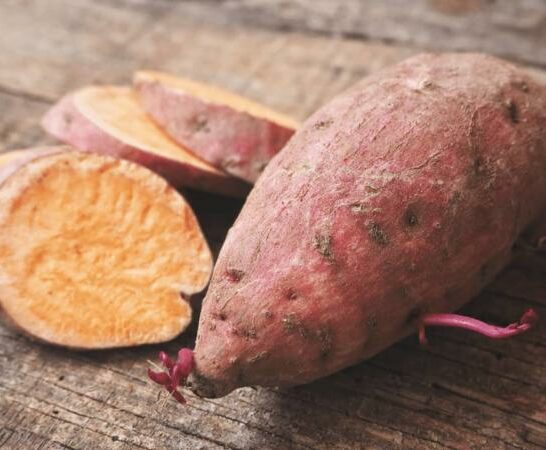If you are looking for a healthier side dish, you don’t need to look any further than the sweet potato! Sweet potatoes are packed with far more vitamins and minerals than regular potatoes, and they taste delicious. But if you are considering switching to sweet potatoes, you may have some questions.
Since regular potatoes are known to turn brown after being sliced or cooked, it’s natural for you to wonder whether sweet potatoes do the same. And if so, why?
Fortunately, you’ve come to the right place to learn about sweet potatoes- including whether discoloration is normal or renders your sweet potatoes inedible.
Do Sweet Potatoes Turn Brown?
Sweet potatoes, like their regular potato cousins, do turn brown. A sweet potato’s skin can brown when it sustains damage during harvesting, transportation, or storage. It can also brown at home due to improper storage methods – like keeping it in direct sunlight, storing it in the fridge for too long, or placing it next to an onion. When peeled, sweet potatoes can brown due to the oxidation that occurs when the polyphenol oxidase enzymes in the vegetable react to the oxygen in the air. Then there are also the mystery spots – brown or black spots – that appear during or after the cooking of sweet potatoes.

5 Reasons Why Sweet Potatoes Turn Brown
Sweet potatoes will turn brown when exposed to air, but not nearly as quickly as regular potatoes do. Sweet potatoes may also darken in color when baked or fried but will maintain much of their orange coloring on the inside. When raw sweet potatoes start to go bad, they’ll turn brown and become moldy.
Here are the reasons why sweet potatoes turn brown:
Reason 1: Physical Damage or Bruising
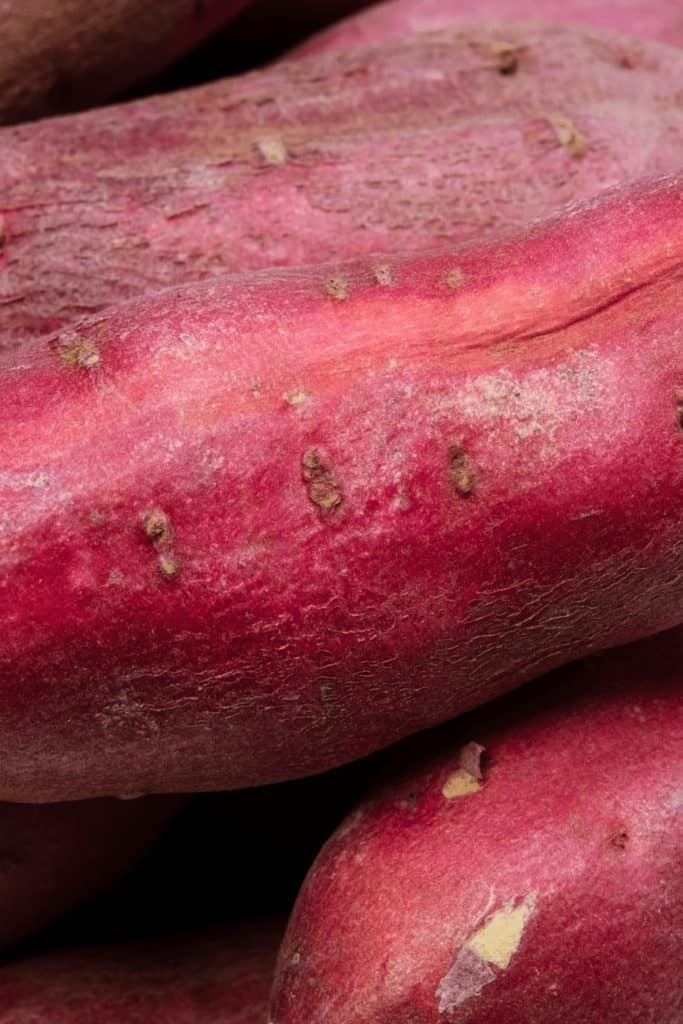
If your whole, unpeeled sweet potato is turning brown or black, it may be because the vegetable has been bruised or damaged while being harvested, transported, or stored.
Mold can also start growing in these damaged spots.
The sweet potato may still be okay so cut away these brown spots before you start peeling and cooking the vegetable.
If there are deep pits of dark discoloration in your sweet potatoes, it is beyond saving.
These pits are black rot, so discard the root vegetables.
Reason 2: Stored in the Fridge for Too Long
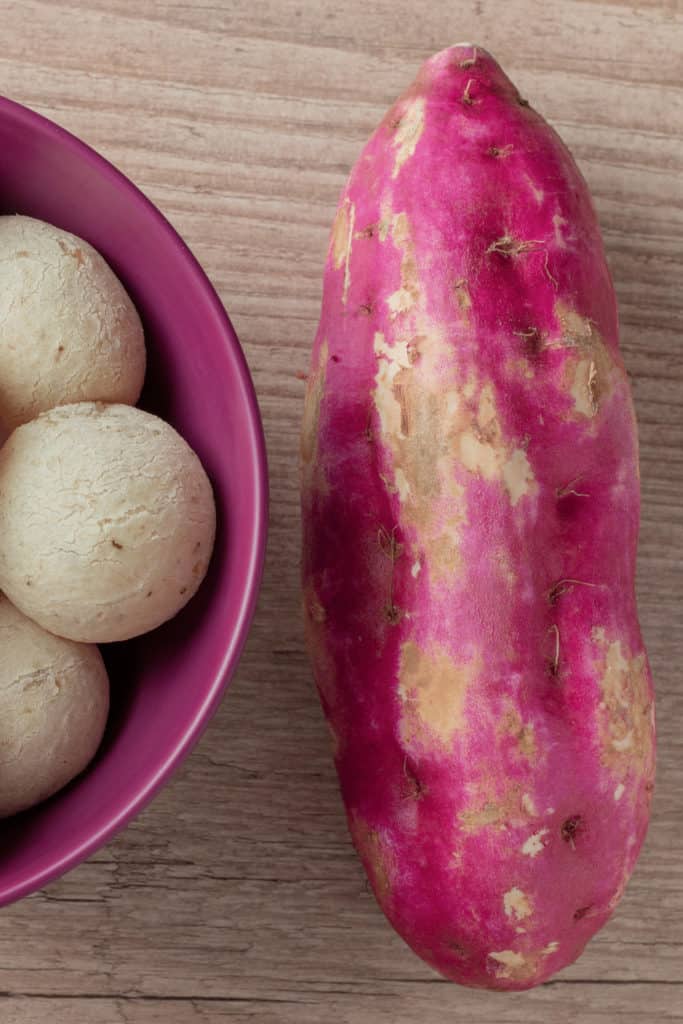
Storing your sweet potato in the fridge for too long results in moldy, brown spots growing on the skin of the root veggie.
Simply cut these mold spots away if you have caught it early on and use the rest of the vegetable if it looks okay and is firm to the touch.
Reason 3: Storing With Onions
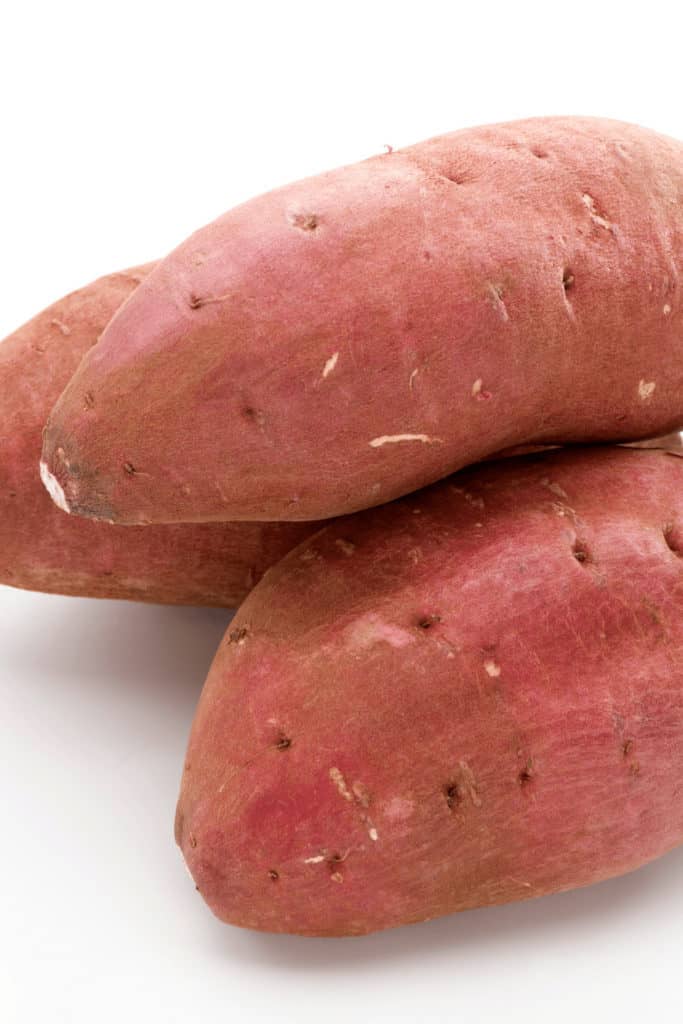
Storing your sweet potatoes next to or near onions is a big no-no.
This leads root vegetables to both spoil and brown shortly after placing them near each other.
Reason 4: Mystery Spots

No, I’m not losing my mind.
Mystery spots appear on your sweet potato even if it hasn’t been damaged and it looks perfectly okay before you add the veggie to the pot or oven.
However, when you take out the cooked or baked sweet potato, mystery black spots have appeared.
You can still eat the sweet potato as the discoloration doesn’t affect the tastiness of the veggie.
These mystery spots appear because of the phenolic compounds in sweet potatoes.
These organic molecules are responsible for the nutritional value, taste, and color of sweet potatoes.
One of these compounds is chlorogenic acid.
When the chlorogenic acid combines with iron compounds found in the sweet potato and the veggie flesh absorbs oxygen from cooking water, the result is a dark color – or mystery spots.
Reason 5: Oxidation
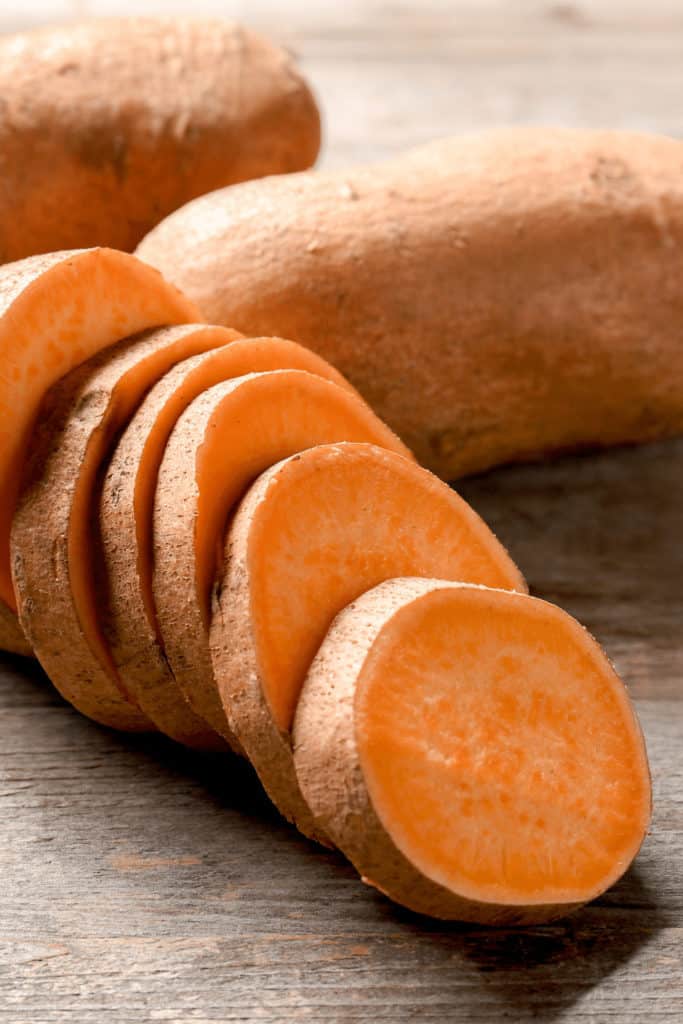
Vegetables like sweet potato, regular potato, and many others turn brown when you’ve peeled them.
When you cut or peel a sweet potato, the polyphenol oxidase – enzymes in the cells of the vegetables – react with the oxygen in the air.
The result of this reaction is the flesh of the sweet potato turning brown.
While it isn’t fun seeing the sweet potato you’ve been peeling and cutting turning brown, the vegetable does this in the wild to help protect itself from pests.
Additional Reasons Why Sweet Potatoes Turn Brown
Sweet potatoes may turn brown when sliced

When regular russet potatoes or even apples are sliced and left exposed to air, they’ll start to turn brown. The same holds true for sweet potatoes. It’s just not as noticeable due to their dark orange coloring.
Sweet potatoes will turn brown when exposed to air due to a process called oxidation. This is a normal chemical reaction that occurs when the chlorogenic enzymes inside the sweet potato react to exposure to oxygen and iron.
If you slice your sweet potatoes and then wait a while before using them, they’ll begin to turn brown. But this doesn’t necessarily mean they have gone bad. You can always cut away or discard the brown pieces and use the remaining potatoes.
Of course, you can easily avoid this situation by cooking your sweet potatoes shortly after they’ve been sliced.
Sweet potatoes may darken in color when cooked
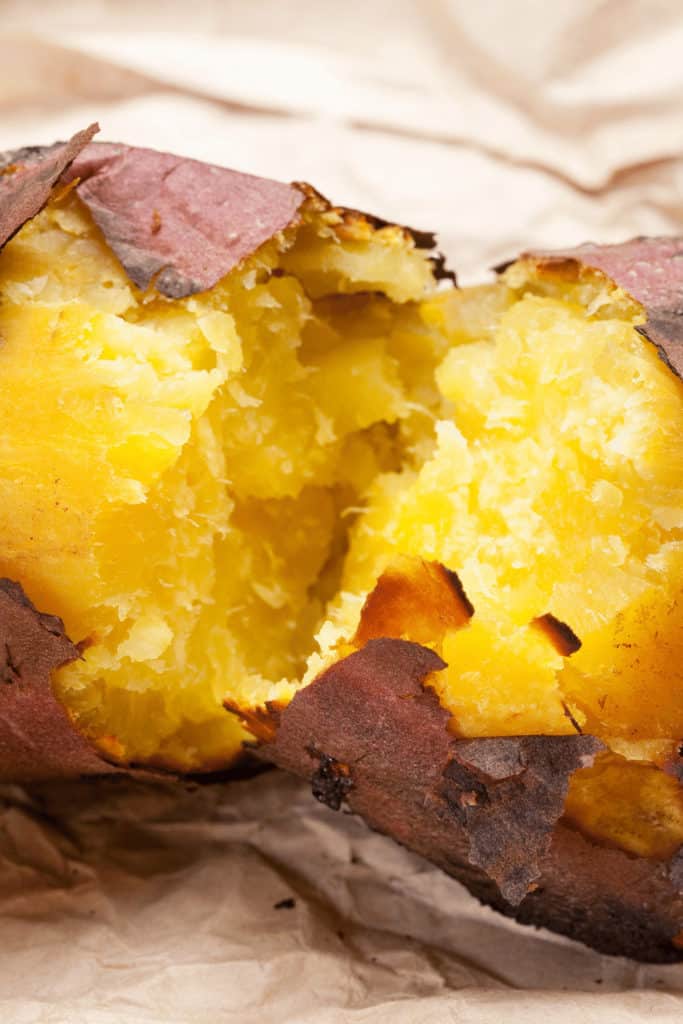
Chlorogenic acids can also cause sweet potatoes- and even some regular potatoes- to darken in color when cooked. So, don’t be surprised if your baked sweet potatoes have turned brown or black in the oven. You didn’t necessarily burn them!
Most likely, when you cool the sweet potatoes and slice them open, the insides will still be dark orange and tender. Oddly, heat doesn’t seem to have much of an effect on the inside of a sweet potato.
For instance, if you slice your sweet potatoes and either bake or fry them, they won’t brown as quickly as regular potatoes. You’ll need to periodically check them for tenderness to avoid accidentally burning them.
Eventually, they’ll become soft inside and slightly crispy on the outside- even if they aren’t completely brown.
Sweet potatoes will turn brown when they spoil
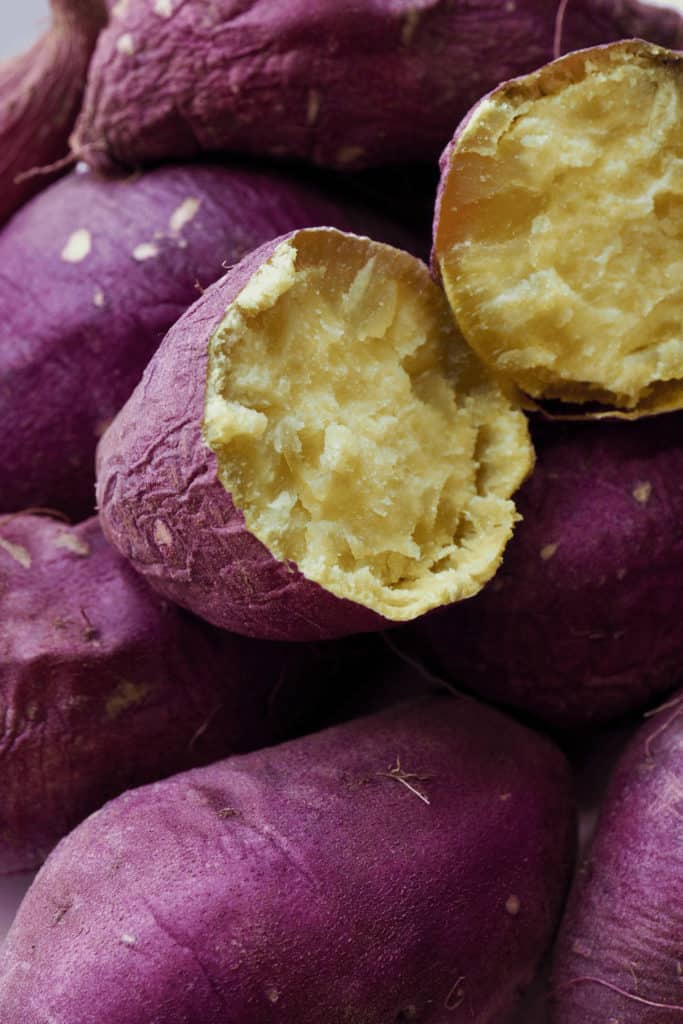
Raw sweet potatoes aren’t naturally brown on the outside, like Idaho or russet potatoes. They have a unique and easily identifiable appearance. But they may occasionally turn brown.
Although this could very well be from damage and bruising that occurred while they were being transported to the store, sweet potatoes will also turn brown on the outside when they are spoiled.
If a brown sweet potato is moldy and soft to the touch, it’s spoiled and should be discarded. Rotten sweet potatoes may also begin to develop odd growths and emit a liquid substance.
Since mold and fungus can harbor bacteria, you should never eat rotten sweet potatoes. Consuming spoiled sweet potatoes can lead to food-borne illness.
How to stop your sweet potatoes from turning brown
If you are preparing a large meal ahead of time, you can always place your sliced sweet potatoes in a bowl of water, add a touch of salt, and store them in your refrigerator until you are ready to cook.
Lemon or lime juice is also an excellent preservative for sweet potatoes. In addition to preventing oxidation, these juices will enhance the sweetness and natural orange coloring of your sweet potatoes. Vinegar has a similar effect without the same flavoring.
Parboiling is another method of preserving sweet potatoes. Briefly boil the potatoes without cooking them all the way. Then either use or freeze them within an hour.
Since sweet potatoes will turn brown when spoiling, you can make them last longer by storing them in a cool dark place or in your refrigerator away from onions.
Ideally, sweet potatoes should be used within two weeks of purchase, but proper storage can make them last much longer. Alternatively, you can freeze your sweet potatoes for later use.
How to Keep Sweet Potatoes From Browning
There are a few methods you can use to keep your sweet potatoes from browning:
Method 1: Store Correctly
When you buy sweet potatoes, make sure you choose the freshest ones so they can last the longest.
Carefully choose sweet potatoes with no bruises, black or brown spots, or any other kind of damage to their skin.
When home, store your sweet potatoes in your pantry where it is cool, dry, and dark.
Method 2: Place in Water
Use this method when you’ve peeled and cut the sweet potatoes. As you peel or cut the veggies, place them directly into a bowl filled with water.
The whole of the sweet potato needs to be covered with water to prevent oxidation.
Method 3: Place in Water With Lime/Lemon Juice
You can also add a bit of lime or lemon juice to the bowl of water as described in Method 2 above.
The citric acid-based liquid prevents the peeled sweet potato from browning, plus it brings out the color of the vegetable’s flesh more.
Method 4: Parboil
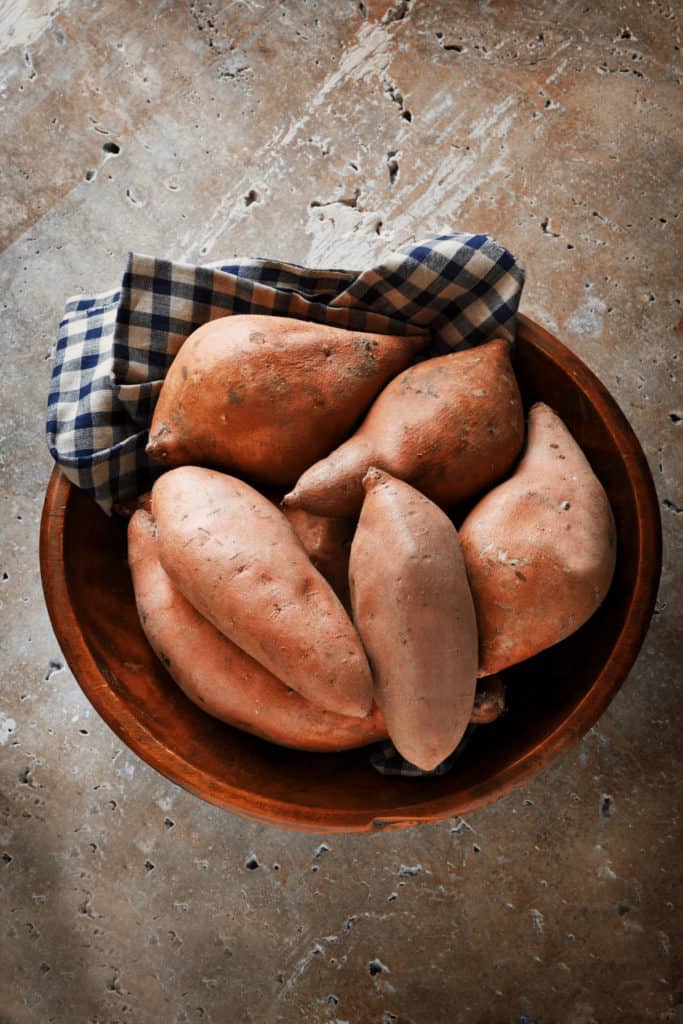
You can also parboil the sweet potatoes to prevent browning as the hot water will stop the oxidation process.
And if you parboil your sweet potatoes, then you can store them in the freezer too.
Method 5: Store in a Ziploc Bag or Airtight Container
After you’ve cooked your sweet potatoes, store them in an airtight container or a Ziploc bag to prevent browning.
Store it in the fridge for up to 3-4 days and then use the sweet potatoes before spoiling.
How to You Know Your Sweet Potatoes Have Gone Bad
Sweet potatoes have a high water content, so when they begin to soften, they start to go bad.
A fresh sweet potato is firm to the touch while one that is bad is squishy.
Brown or black spots may also start appearing on the sweet potato skin.
Plus, the vegetable can begin to sprout.
If you are unsure whether the sweet potato is okay to be consumed, rather be safe than sorry and throw it away or add it to your compost heap.
In essence, your sweet potato has gone bad if it:
- Leaks water
- Is squishy to the touch
- Has soft spots
- Smells
- Is dehydrated
- Is wrinkly and shriveled
Frequently Asked Questions About Do Sweet Potatoes Turn Brown
How can you tell if sweet potatoes are bad?
Prevent sweet potatoes from browning by placing the peeled vegetable in a bowl filled with ice water. You can also mix one quart of water with 3 tablespoons of lemon juice and then place the peeled sweet potato inside a bowl with this mixture.
Do sweet potatoes oxidize like regular potatoes?
Sweet potatoes, regular potatoes, apples, avocados, and various other fruits and vegetables oxidize when they are peeled and their flesh is exposed to the oxygen in the air. The result of the oxidation is the flesh turning brown or gray.
How do you keep sweet potatoes from turning brown?
Prevent sweet potatoes from browning by placing the peeled vegetable in a bowl filled with ice water. You can also mix one quart of water with 3 tablespoons of lemon juice and then place the peeled sweet potato inside a bowl with this mixture.
Do sweet potatoes oxidize like regular potatoes?
Sweet potatoes, regular potatoes, apples, avocados, and various other fruits and vegetables oxidize when they are peeled and their flesh is exposed to the oxygen in the air. The result of the oxidation is the flesh turning brown or gray.
How can you tell if sweet potatoes are bad?
Sweet potatoes that have gone bad show signs of discoloration and there may be growths throughout the vegetable’s skin. The sweet potato will also be soft to the touch, while a fresh veggie has a firm texture. Water may also leak when you squeeze the sweet potato, and the skin or flesh may turn black or brown.
Can you eat sweet potatoes with brown spots?
If you notice brown spots inside your sweet potatoes, you can simply cut them out and use the rest of the potato. Or you could always toss the potatoes in the garbage. It’s your call, but the brown spots won’t affect the rest of the potato.
How long can I store sweet potatoes?
Sweet potatoes can last for a long time- depending on the room temperature. You can store your sweet potatoes in your pantry for up to five weeks, but they’ll last two to three months when refrigerated. If you freeze them, they’ll last even longer.
Can you get sick from eating rotten sweet potatoes?
While it’s still safe to eat a sweet potato that has a few brown spots, you should always discard moldy and spoiled sweet potatoes. You can get sick from food poisoning after eating rotten sweet potatoes.
Conclusion About Do Sweet Potatoes Turn Brown
Quite interesting how sweet potatoes can brown from harvest, transport, and storage damage as well as after you’ve peeled or cooked them.
While sweet potatoes can turn brown when exposed to air due to a process called oxidation, this isn’t nearly as common as it is with regular old russet potatoes. If you are slicing your sweet potatoes for later use, simply placing them in a bowl of cold water and sticking the bowl in your refrigerator will slow oxidation.
Although sweet potato peels will darken when cooked, the inside of the potatoes will maintain their orange coloring and nutrients, making them a tasty and healthier alternative to standard potatoes.
As long as your sweet potatoes aren’t showing signs of spoiling, you can still enjoy them even when they start to turn brown. Once you come across a few good recipes you can start to incorporate sweet potatoes into most meals. Soon, you’ll be on the right road to a healthier lifestyle.
It is, however, more important for me to prevent the browning process from occurring to peeled and cooked sweet potatoes, and now you know how!

